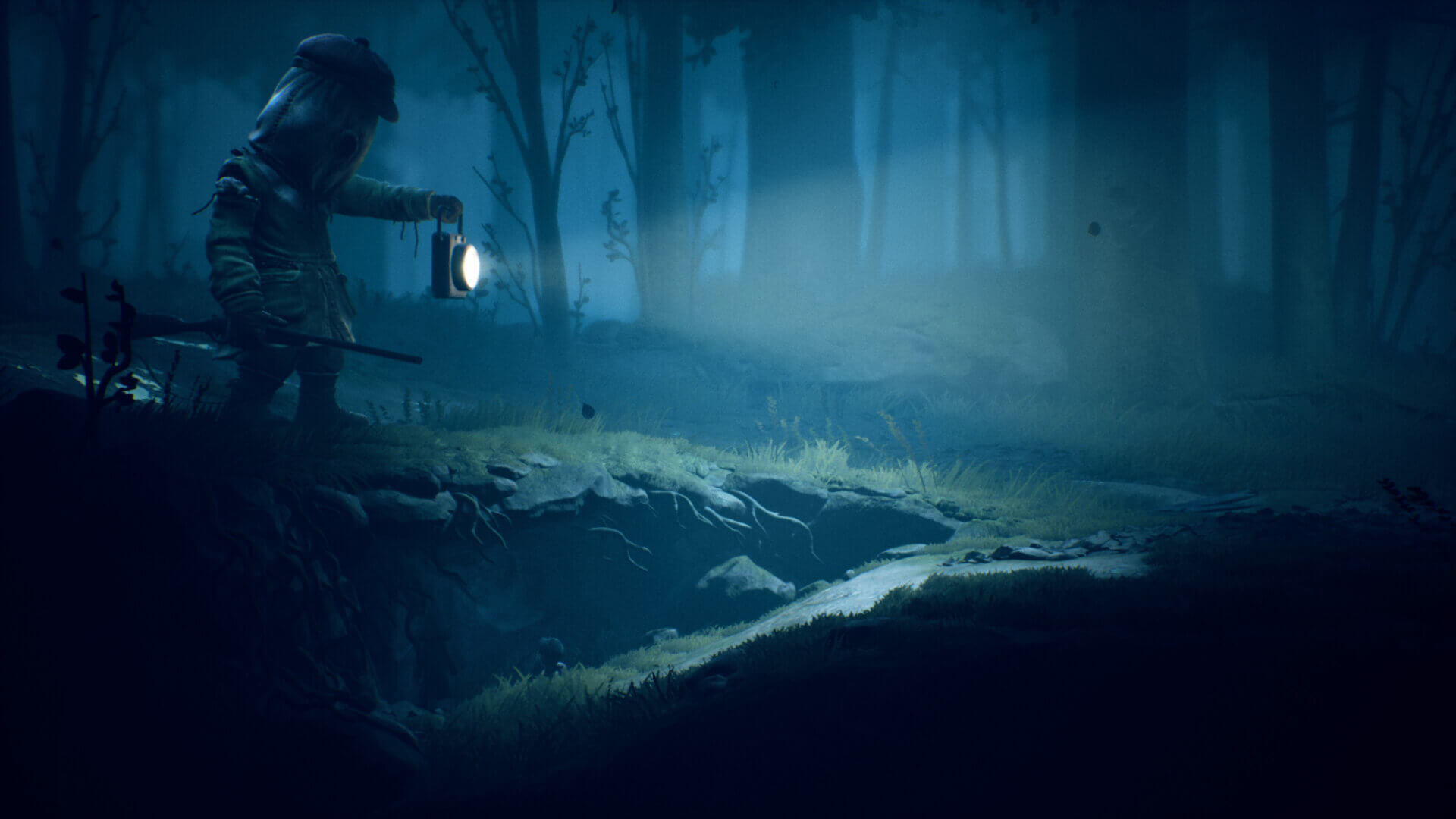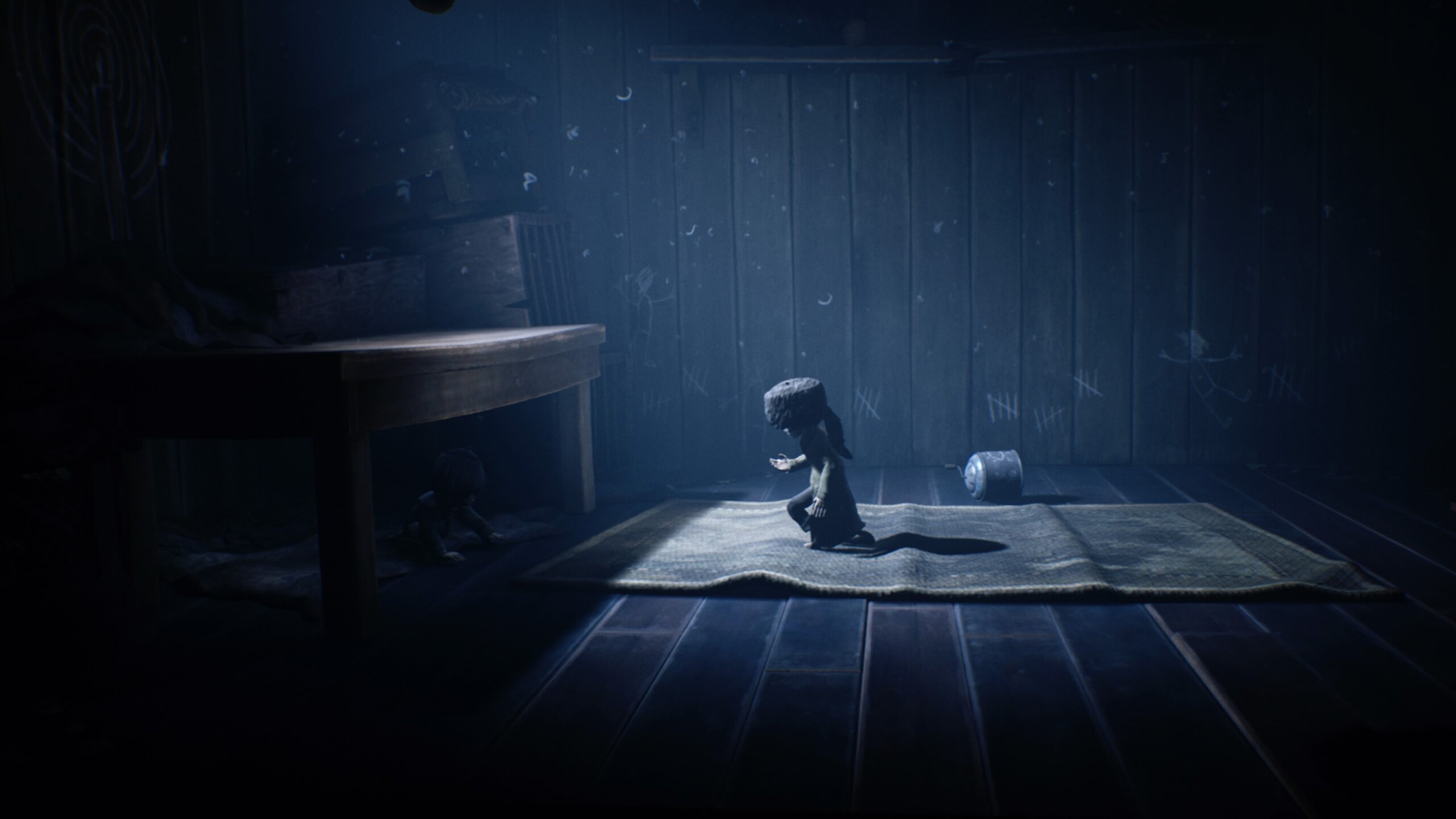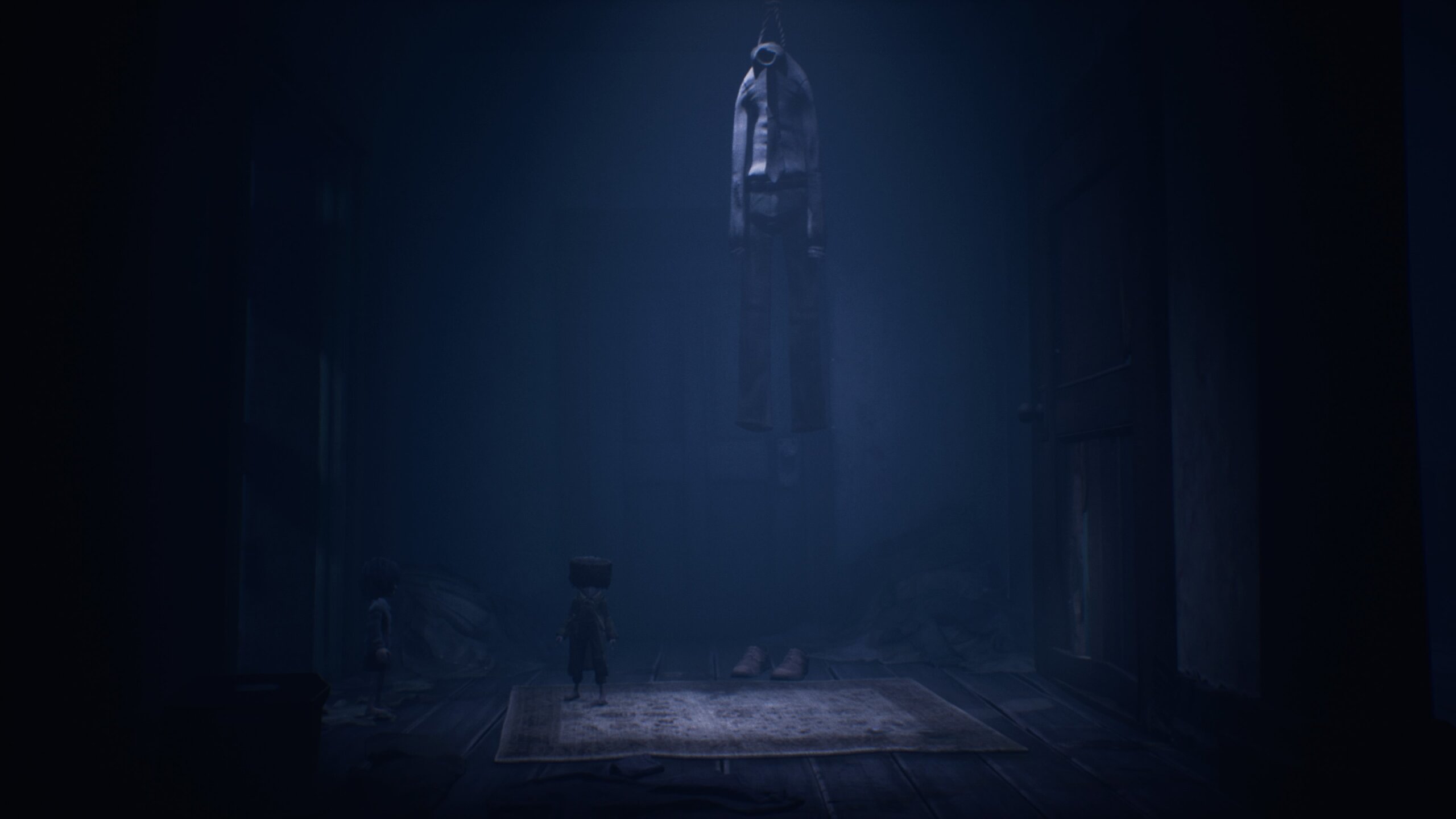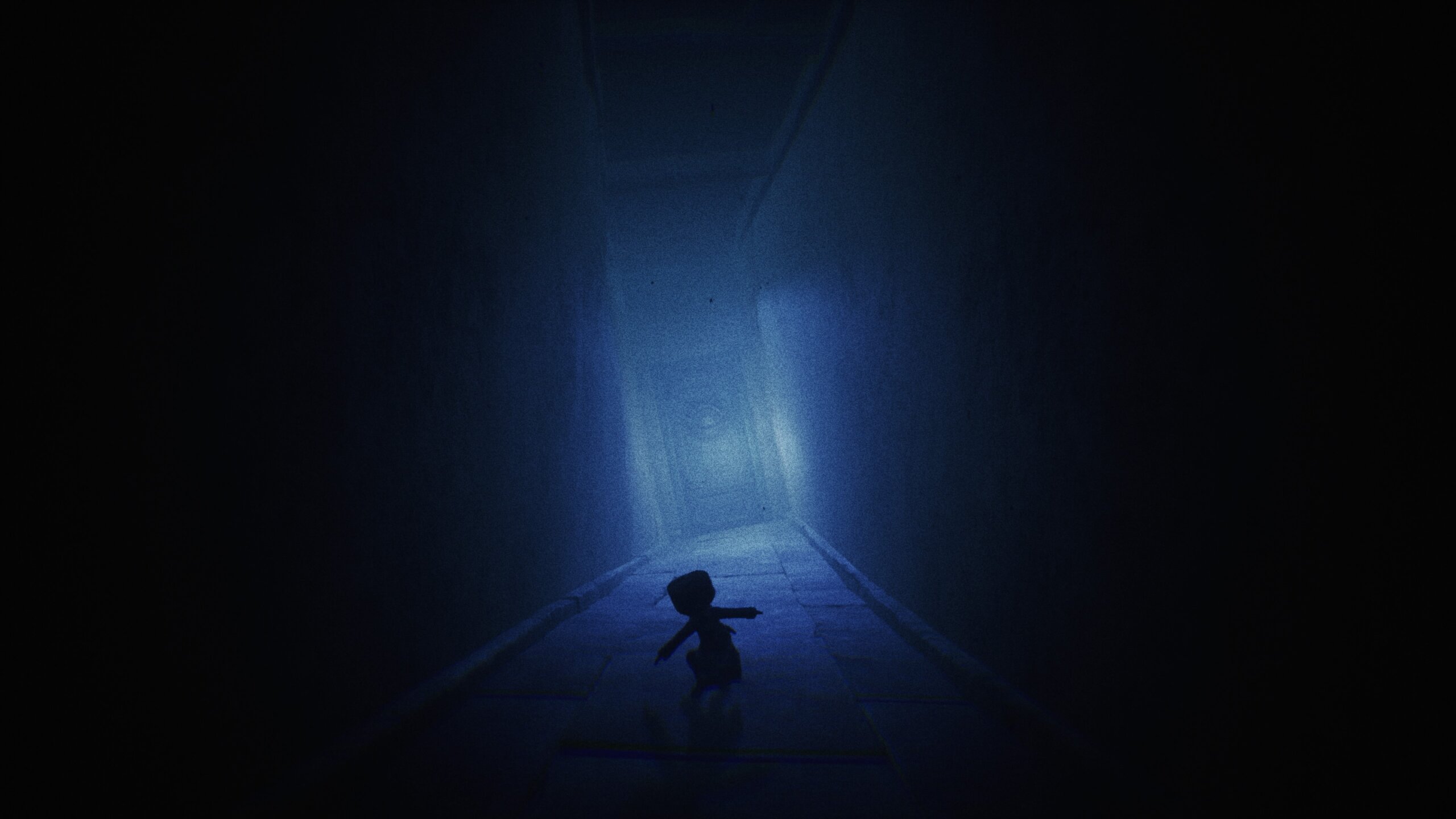Little nightmares don’t always mean little scares…
Hailing from Malmö, Sweden is indie developer: Tarsier Studios with the follow up to their 2017 cult horror-platformer: Little Nightmares. Little Nightmares II places you in the shoes of newcomer protagonist: Mono, who eventually teams up with the original game’s Six with the pair of them forced to explore the horrors present within the Pale City. Following the same 2.5D gameplay premise as its predecessor, Little Nightmares II builds on it’s already solid foundation by offering dynamic, evolving gameplay, that keeps the gameplay fresh across the intriguing (yet somewhat brief) narrative. Little Nightmares II released on the 11th February 2021 for the PlayStation 4, Xbox One, Nintendo Switch and PC, with PlayStation 5 and Xbox Series X ports scheduled for later on in the year. As always, I’ll be going over the PlayStation 4 version of the game (playing on a PlayStation 5) going over both the good and the bad, while ultimately discussing whether the game is worth your time and money at the £24.99 asking price (UK PSN Store).
From the early days in the Arcade with Donkey Kong (1981) and Mario Bros (1983) to the 2D and 3D heavyweight titans of the early-to-mid nineties: Sonic the Hedgehog (1991) and Crash Bandicoot (1996); platformers have dominated gaming for over 40 years, being one of the most of the most beloved genres by gamers across the globe, that has largely remained the same (for the most part) since its inception. Horror on the other hand has always been a bit more subjective; having multiple sub-genres that have taken the genre in different directions, making it far less identifiable a solitary genre as a result. While it can be argued that the market audience is distinctly different for both platformers and horror, there have been some titles that have attempted merge the two together and give the simplistic gameplay loop of platformers a darker edge; the Castlevania series, 2010’s excellent Limbo as well as Sand Sailor Studio’s Black the Fall(shamelessly plugging my own review here) are all good examples of this, but none have been quite as successful at being simultaneously endearing and deeply disturbing as much as Tarsier Studio’s 2017 indie-horror hit: Little Nightmares, whose sequel launched on the 11th of this month, titled Little Nightmares II.
Little Nightmares II takes place in the same 2.5D bizarre (yet charming) world as its predecessor; moving away from the rusted, iron confines of the Maw and into the cold and lifeless Pale City. The game places you in the metaphorical shoes (he’s barefoot) of a young boy called Mono, who wakes up in the woods following a distorted nightmare about a mysterious hallway leading to a door, that seems to be slowly but surely summoning Mono toward it. It’s not long before Mono stumbles across Six (the protagonist from the first game) and following what could be described as a somewhat fumbled escape attempt, both Six and Mono are left with no choice but to explore the Pale City; a city that has been sapped of all-natural beauty, being left to the mercy of a strange tower in the centre of the urban settlement, causing the city’s denizens to be warped and twisted into creatures out of one’s nightmares (giving off a strong Silent Hill vibe for sure). Mono and Six must work together to survive the horrors of the Pale City, while simultaneously uncovering the secrets of the signal tower, and how it’s tied to the very fate of Mono himself. Much like its predecessor, Little Nightmares II is largely a wordless narrative (outside of the occasional ‘heeeeey’) opting for environmental storytelling that is blended seamlessly within the game’s emphasis on exploring its beautifully crafted environments. In addition, the game’s method of storytelling allows the player to easily jump into the game’s story without the fear of (potentially) not having played the first one, which is nice to newcomers of the franchise, but does offer some nods of the head throughout if you managed to.

From the get go, it’s got to be said that Little Nightmare II’s best feature is its stellar, Tim-Burton-esque art design; boasting some downright creepy monsters as well as an impressive array of environments that beautifully present the decaying and desolate streets of the Pale City. Horror is also very much a feature at the forefront of the game, keeping you on the edge of your seat with exceedingly well done stealth based cat-and-mouse sections as well as a pretty heavy atmosphere that will keep you on the edge of your seat for the entirety of it’s somewhat short run-time (four hours as a comparable standard, going up to five or six if you go after all of the collectibles or somewhat less adept with puzzles). Though short, Little Nightmares II very rarely recycles gameplay elements, constantly throwing new mechanics and scenarios at you as you progress through the game’s areas. This bleeds directly into the games aforementioned creatures, all of which have their own mechanics that keeps these encounters both fresh and unnerving to boot. A good example of this is the hospital section; armed with a torch, Mono has to navigate the hospital’s lower floors alone, using the beam of light from his flashlight to not only see through the dense blackness, but freeze the hospital’s crudely-stitched patients in their tracks, following him with reckless abandon while they remain enveloped in darkness. Situations like this are a perfect blend of both gameplay and atmosphere, leveraging gameplay mechanics beyond their usual means to serve a purpose in a much broader context, which is something the horror genre as a whole is in desperate need of (starting at you Home Sweet Home). The game also manages to mix up the formula set out by the first game, by allowing Mono (on occasion) to fight back with melee weapons that are dotted around the game’s world (usually situation specific). While a nice addition, the combat unfortunately suffers with some hitbox detection issues which coupled with some annoying camera angles (the 2.5D format doesn’t always work to the games advantage) can sometimes make some deaths feel cheap and out of your control when you over/under estimate how close you need to be to land a successful hit.
Little Nightmares II takes place over the course of five chapters, each of which explores different environments and tropes of the horror genre, offering a lot of the aforementioned cat-and-mouse stealth sections in conjunction with some very organic puzzles that feel rewarding to progress through, but can suffer with a bit of trial and error on the odd occasion. Atmosphere is also a stellar element of the game’s design, with an excellent ambient soundscape, with music and audio ques that heighten the tension to a new level (I can wholeheartedly recommend playing this game with headphones). While the game isn’t outright scary in the traditional sense, it manages to deliver on the ‘spooky yet charming’ experience (that is usually reserved for Tim Burton movies) that is a refreshing take on the genre for sure. While the atmosphere, art design and gameplay in Little Nightmares II is excellent, the game isn’t without some minor faults. For starters the game’s control scheme leaves a lot to be desired, which is usually one of the most important aspects of any platformer. While simple, the controls feel somewhat stiff and clumsy, failing to register half the time in terms of both grabbing ledges to climb up, as well as the detection issues previously mentioned when it comes to the game’s combat; functionally they work as intended for the most part, but don’t expect anything too ground-breaking or innovative here. In addition, the 2.5D camera scheme can sometimes make Mono’s movement go a bit all over the place, causing the player to sometimes (once again) over/under estimate how much space you need to give to be able to clear jumps properly. In hindsight though, these issues don’t detract from the experience all that much, but could be the deciding factor for some people when weighing up the quality vs. quantity argument, when you’re looking at a short (but quality) experience for what could be argued as quite a premium price tag for an indie title (£24.99/$29.99).

In terms of performance, Little Nightmares II is pretty standard fare, which is disappointing for an end of generation indie title that is very light on GPU clogging features. Irrespective of what system you’re playing it on, the framerate is capped at 30FPS for both PS4 and PS4 Pro, and while very stable, it would have been nice to have a 60fps option. In terms of resolution, Little Nightmares II is presented in 1920x1080p resolution on the OG PS4, with a 2880x1620p resolution for the PS4 Pro. Playing on a PlayStation 5 provides no additional benefits at this stage, running a backwards compatible Pro version, with next-gen upgrades planned for later in 2021 (which will be provided for free if you have the PS4 version of the game). While the game won’t be winning any awards for its technical achievements, it has to be said that the game is very much a visually pleasing experience. The game’s textures are beautifully presented alongside the game’s environments, holding a rather dark colour palette (dark blues, blacks and purples) which sits alongside the tone of the Pale City perfectly. Overall, Little Nightmares II is a charming little horror experience, that emphasises quality over quantity. The game’s short length will be a turn off for some, and the game’s control scheme does leave a lot to be desired, but what is presented here is a solid indie horror title that is presented beautifully, showcasing a chilling journey with atmosphere seeping out of every pore and gameplay that stays (relatively fresh) throughout the entire experience. Definitely worth picking up if you’re a fan of both platformers and horror with a Tim Burton-esque ‘spooky’ atmosphere and art style, but I can also see how £24.99 may be a bit much of a ‘premium’ price for some considering how short the experience actually is.
A PlayStation 4 review code was provided by Bandai Namco.





































